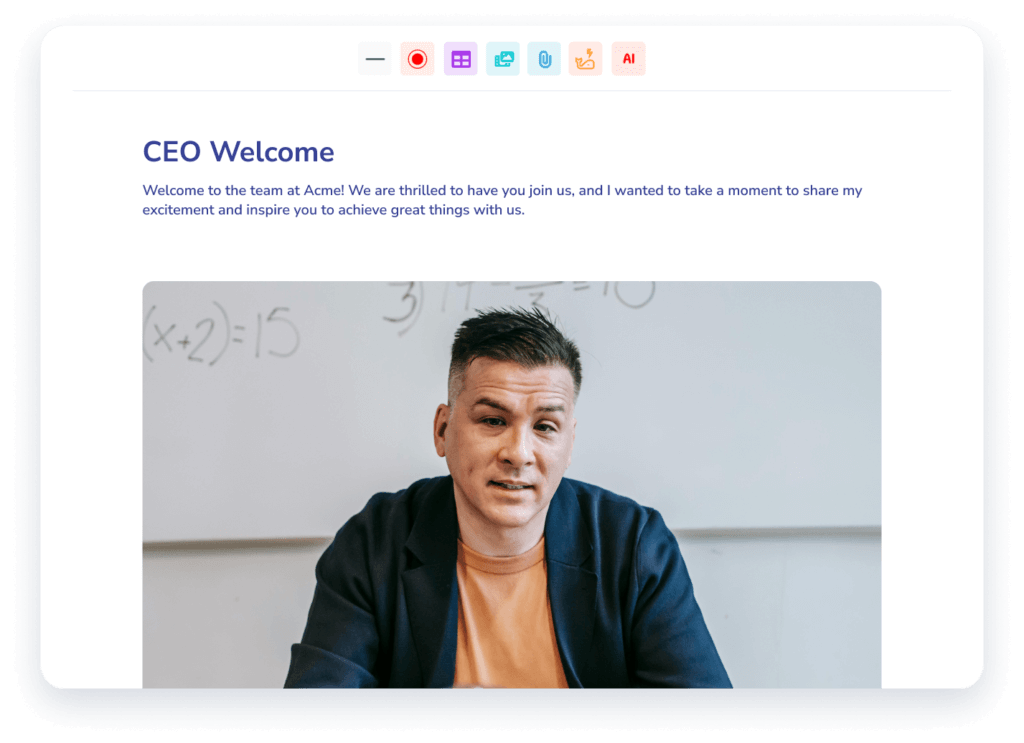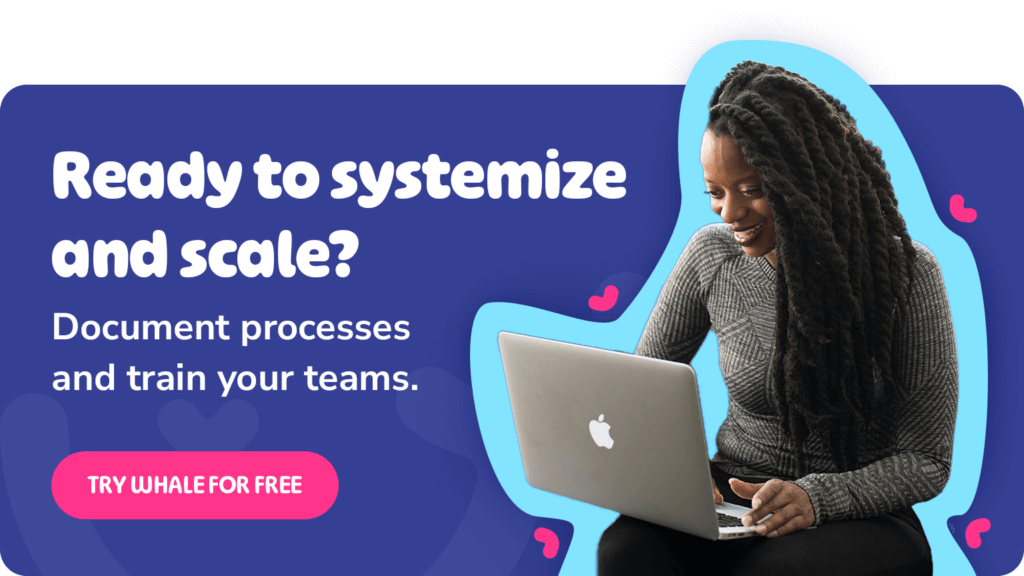Employee onboarding is a critical step in welcoming new hires into your company. Many organizations adopt an onboarding portal to streamline the process, offering new hires easy access to key information and resources. While an employee onboarding portal can be useful, relying solely on it might not be enough to fully support your onboarding efforts. Let’s dive into why a new hire portal can fall short and how you can upgrade your onboarding strategy to ensure long-term success.
Understanding the Employee Onboarding Portal
An onboarding portal serves as a centralized hub where new hires can access company information, training materials, and tasks to complete during their onboarding process. It’s designed to simplify the integration of employees by providing quick access to HR documents, training modules, team directories, and other vital resources.
However, it’s essential to recognize the limitations of these portals. Before we explore why relying only on an employee onboarding portal may not be sufficient, let’s break down its role compared to other onboarding tools.
Onboarding Portal vs. Software Solutions
While employee onboarding portals offer a static delivery of information, dynamic onboarding software solutions take things a step further by automating tasks, offering personalized onboarding flows, and integrating with other tools. Software solutions often include features like performance tracking, real-time collaboration, and analytics—things you won’t typically find in a standard onboarding portal.
Onboarding Portal vs. Comprehensive Onboarding Systems
A comprehensive onboarding system goes beyond the scope of a new hire portal, offering tools for continuous learning, cultural acclimation, and long-term career development. These systems engage employees far beyond their first 90 days, ensuring a smoother and more effective transition. In contrast, most onboarding portals are more static, limiting their usefulness to the early phases of onboarding.

Key Benefits Of Using An Employee Onboarding Portal
While an onboarding portal alone may not be enough, it does provide several benefits when used effectively.
1. Enhancing the New Hire Welcome Experience
A new hire portal plays an important role in helping new employees feel welcomed and valued. It offers a centralized place for new hires to access essential information like company policies and training materials, helping reduce any overwhelm during their first few days.
2. Centralizing Resources in a Single Hub
One of the biggest benefits of an employee portal is its ability to centralize all resources in one easy-to-access location. New hires no longer need to dig through emails or shared drives to find what they need. Everything—from HR policies to training videos—is at their fingertips, streamlining the onboarding process.
By centralizing resources, you can streamline various new employee onboarding training types to ensure your new hires are fully prepared, whether through formal training sessions, job shadowing, or online modules.
3. Streamlining Task Management
An employee onboarding portal makes it easier to manage the various tasks new hires must complete, such as filling out forms, completing training modules, or setting up meetings with their new team. By keeping all tasks in one place, the onboarding portal ensures nothing is overlooked during the crucial first few weeks.
Effective Tips for Onboarding New Hires, Both Remotely and In-Person
Whether you’re onboarding remote or in-person employees, leveraging digital onboarding strategies ensures that your process is efficient and scalable, no matter where your new hires are located.
1. Establish a Pre-Onboarding Routine
Engage new hires even before their first day. Use the onboarding portal to introduce them to company culture, complete paperwork, and provide essential resources. This helps reduce stress and builds excitement.
2. Facilitate Cohort-Based Icebreakers
Encourage new hires to connect with their peers through cohort-based icebreakers. Whether through virtual introductions or in-person meetings, building early connections fosters collaboration and helps new employees feel like part of the team.
3. Utilize a 90-Day Buddy System
Pair new hires with a more experienced employee for their first 90 days. This buddy system helps new hires navigate the company culture and feel more supported as they settle into their role. You can also use your new hire portal to help track this program and offer resources.
Pairing this system with a structured 30-60-90 day onboarding plan helps ensure new hires stay on track and fully integrate into their roles during their critical first three months.
4. Standardize Your Onboarding Process
Consistency is key. Make sure every department uses the same onboarding portal to ensure new hires have a high-quality, consistent experience across the board.
To ensure consistency across all departments, it’s crucial to standardize and optimize your onboarding process, making it easier for every new hire to have the same high-quality experience, regardless of location or role.
5. Collect and Act on Feedback
Use the onboarding portal to gather feedback from new hires. Their input can help improve the process and demonstrate that the company values their experience.
Why An Onboarding Portal Alone Isn’t Sufficient
While portals are useful, they often don’t adapt to the latest employee onboarding trends, such as integrating AI-driven tools or offering personalized onboarding pathways for different employee profiles. Employee onboarding portals tend to focus only on the initial phases of onboarding, lacking the tools to support continued development, learning, or performance tracking.
In today’s world, where hybrid and remote work is more common, companies need a comprehensive onboarding approach to keep employees connected and prepared for their roles. Relying solely on a new hire portal might limit long-term success.
Essential Features To Look For In An Onboarding Portal
If you’re considering implementing or upgrading your onboarding portal, there are a few key features you should prioritize to ensure it meets the evolving needs of your business.
1. Seamless Integration with Current Tools
Your onboarding portal should integrate with the tools your company already uses, such as HR systems, communication platforms, and task management software. Seamless integration ensures that your portal becomes an extension of your existing digital ecosystem, reducing duplication of effort and data silos.
For example, integration with Slack, Trello, or your HRIS (Human Resources Information System) can facilitate smoother communication and task tracking.
2. Incorporation of Existing Content
Rather than creating content from scratch, your onboarding portal should be able to incorporate the resources your company already has in place. Whether it’s training videos, HR documentation, or team overviews, being able to pull from existing content allows for a faster setup process and more consistent employee experiences.
3. Use of Modern Delivery Methods
Onboarding content shouldn’t be limited to documents or lengthy PDFs. Opt for an onboarding portal that uses a variety of modern delivery methods, such as interactive videos, quizzes, or gamified learning experiences. This variety will engage new hires more effectively and ensure better retention of important information.
4. Integration of Stakeholder Tasks
Onboarding often requires the involvement of various stakeholders, such as HR, IT, and direct supervisors. A robust onboarding portal should be able to manage and track tasks from multiple departments, ensuring that all necessary steps are completed in a timely manner.
For instance, an IT team may need to ensure that hardware is ready for the new hire, while HR may need to verify that all compliance training has been completed. The portal should support these cross-functional tasks and provide a comprehensive overview of the onboarding process.
5. Support for Preboarding Activities
To create a seamless transition into the company, look for an onboarding portal that supports pre-boarding activities. Pre-boarding involves giving new hires access to certain materials or tasks before their first day, helping them feel more prepared and engaged. Preboarding can include reviewing company policies, filling out necessary forms, or even participating in virtual team meetings.
In conclusion, while an employee onboarding portal offers some valuable benefits, it’s important to recognize its limitations. To maximize engagement and long-term success, companies should consider integrating these portals into a more comprehensive onboarding system that addresses the evolving needs of new hires across all stages of their journey. By combining a portal with additional onboarding tools, businesses can ensure a smoother, more effective onboarding experience that goes beyond the basics.
Bottom line?
An employee onboarding portal is a great starting point to streamline the onboarding process, but it’s not a complete solution. While it centralizes resources and simplifies task management, relying solely on a new hire portal can limit employee engagement and long-term success.
To truly support your new hires, combine your onboarding portal with dynamic tools that offer personalized learning, feedback integration, and continuous development. A more comprehensive approach ensures your employees feel connected, prepared, and empowered to contribute from day one—boosting retention and overall productivity.
FAQs on an Employee Onboarding Portal
What is an onboarding portal?
An onboarding portal is an online platform that simplifies the employee integration process by centralizing key resources like company policies, training materials, and task lists. It automates tasks such as document sharing, form completion, and task tracking, helping both HR and new hires stay organized. The portal enhances communication, provides training schedules, and ensures a smooth transition into new roles by streamlining the onboarding process and ensuring all necessary steps are completed efficiently and on time.




